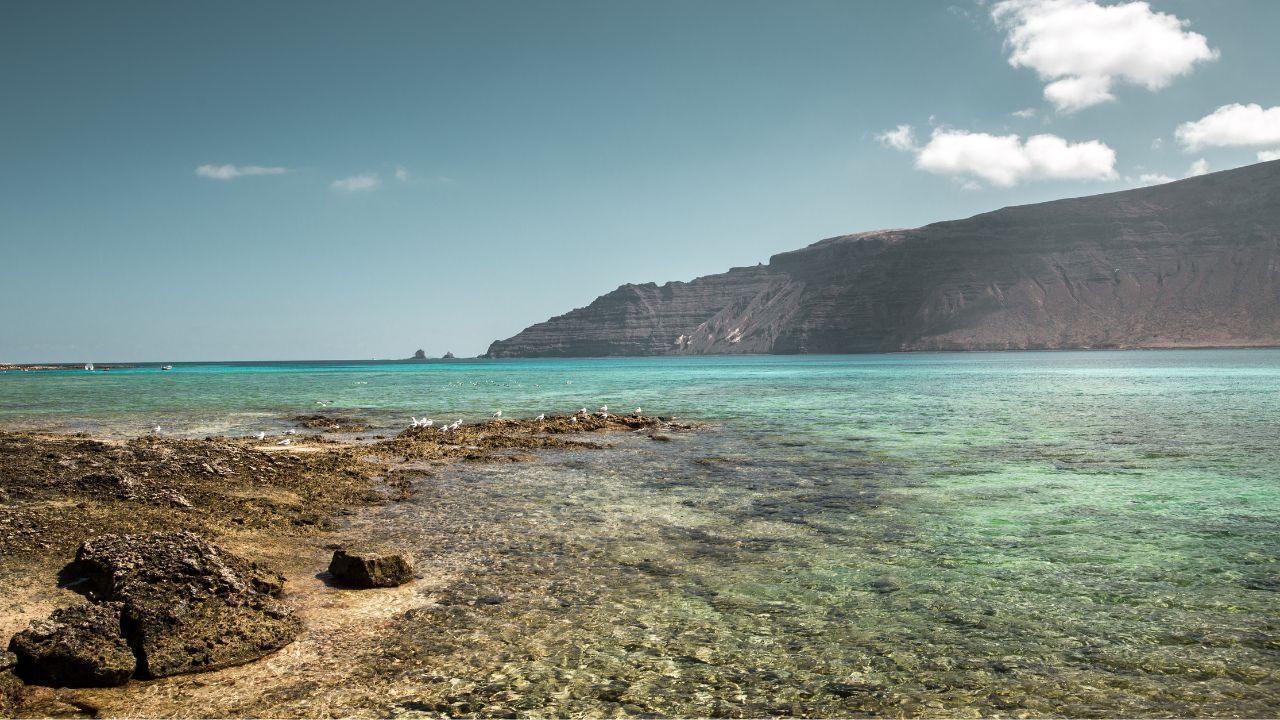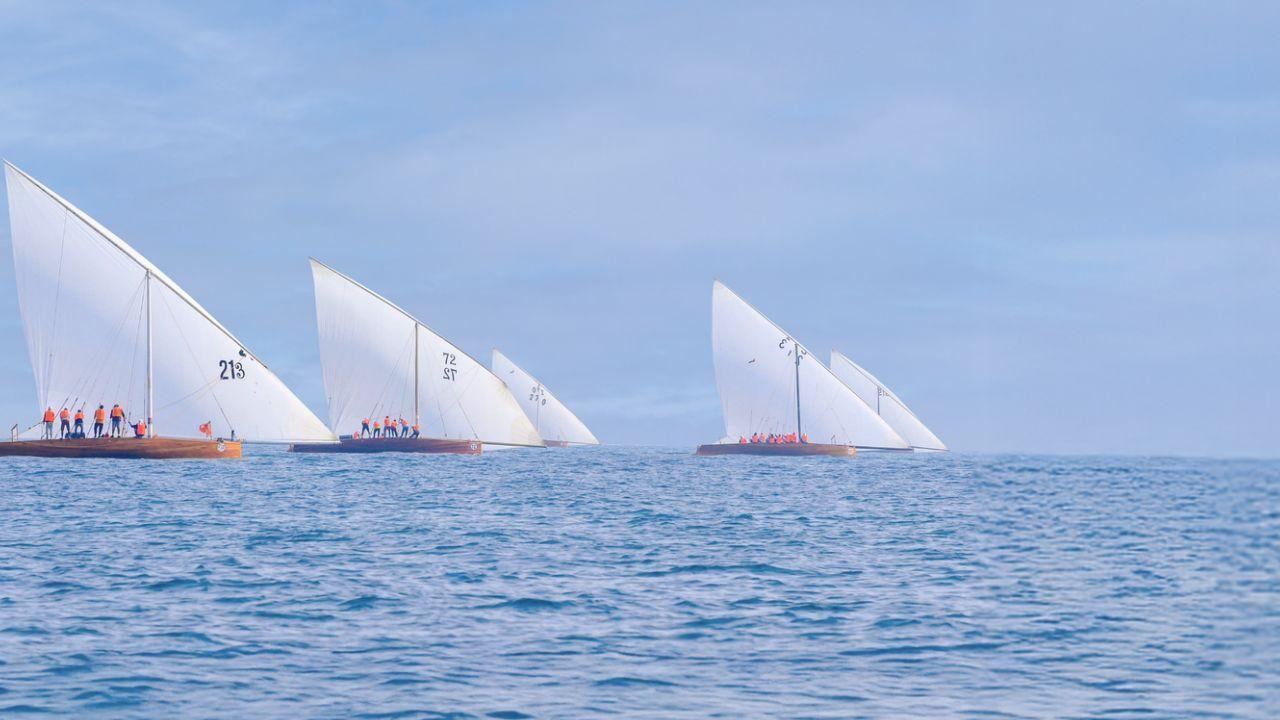
Point Nemo is the most isolated spot in the ocean, far from any land. It’s one of the last places on Earth where humans have rarely ventured. Its extreme remoteness makes it a mysterious and untouched area of the planet.
The Mariana Trench is the deepest part of the world’s oceans. At over 36,000 feet deep, it’s one of the last places on Earth that humans have hardly explored. The immense pressure and cold make this trench a challenging and largely unexplored area.
The Central Sahara Desert is a vast, arid region in North Africa. Its harsh climate and endless sand dunes mean it remains one of the last places on Earth humans have not extensively explored. The desert’s extreme conditions keep it largely unvisited.
In Canada’s Banff National Park, there are hidden caves beneath the rugged terrain. These caves are among the last places on Earth that have not been thoroughly explored. They are believed to contain unique formations and ecosystems.
The Lost City of the Monkey God is a legendary city hidden deep in the jungles of Honduras. Despite several expeditions, it remains one of the last places on Earth not fully uncovered. The dense jungle and challenging terrain have kept it a secret.
Antarctica’s subglacial lakes are buried beneath miles of ice and are among the last places on Earth humans have not visited. These lakes could hold ancient secrets and insights into life and climate history, but their icy cover keeps them unexplored.
Point Nemo is the most isolated spot on Earth, located in the South Pacific Ocean. It's known as the “oceanic pole of inaccessibility” because it’s the furthest point from any landmass.
This remote point is about 2,688 kilometers (1,670 miles) from the nearest land. It's surrounded by miles of open ocean, making it one of the last places on Earth that humans rarely visit.
Point Nemo is important because it represents one of the most remote and untouched areas of our planet. Its isolation makes it a unique location for studying oceanic conditions and life forms that live in such extreme environments.
Getting to Point Nemo is extremely difficult due to its vast distance from land. The open ocean around it means there are no nearby islands or ships, making it hard for explorers to reach this spot.
Despite its remoteness, Point Nemo is interesting for scientists because it’s an area with minimal human impact. This makes it a perfect place for studying natural oceanic processes and understanding how life can adapt to isolated environments.
As technology advances, future missions might explore Point Nemo more thoroughly. These explorations could reveal new information about the ocean’s depths and the creatures that thrive in such isolated locations.

The Mariana Trench is the deepest part of the world's oceans. Located in the Pacific Ocean, it's a mysterious and fascinating place where no sunlight reaches.
It stretches to about 36,000 feet (11,000 meters) deep. That's deeper than Mount Everest is tall! The trench's extreme depth makes it one of the last places on Earth humans have rarely explored.
The Mariana Trench is home to unique creatures that live in its dark, cold waters. Scientists believe there are species here that haven’t been discovered yet.
Exploring the trench is difficult because of the immense pressure and cold temperatures. The pressure at the bottom is over 1,000 times greater than at sea level!
Even though it's hard to explore, scientists have found some amazing things in the trench, like giant squid and strange fish. These discoveries help us understand more about life in extreme conditions.
New technologies are being developed to explore the Mariana Trench further. As we learn more, we might uncover even more secrets about this deep, mysterious place.
The Central Sahara Desert is one of the largest and least explored deserts on Earth. It spans across North Africa and is known for its enormous sand dunes and rugged landscapes. This desert remains one of the last places on Earth where humans have had limited exploration.
The Central Sahara Desert is incredibly hot and dry, with temperatures often soaring above 100°F (38°C). Its harsh climate makes it challenging for people to live or explore extensively. The desert's extreme conditions contribute to its mystery and limited human presence.
This desert is filled with stunning features like vast sand dunes, rocky plateaus, and ancient mountain ranges. The unique geography of the Central Sahara Desert creates a dramatic and awe-inspiring landscape that remains largely untouched.
The Central Sahara Desert has very little vegetation, with only a few hardy plants and shrubs surviving in its arid conditions. This sparse plant life adds to the desert's desolate beauty and makes it a challenging environment for explorers.
Despite its harsh conditions, the Central Sahara Desert is believed to hold hidden treasures such as ancient artifacts and geological formations. The desert's remote and unexplored areas might contain secrets waiting to be discovered.
Exploring the Central Sahara Desert can reveal valuable information about Earth's history, climate, and ecosystems. Understanding this desert helps scientists learn more about how life can thrive in extreme environments and contributes to our knowledge of the planet.
Banff National Park in Canada is home to hidden caves beneath its rugged landscape. These underground passages are some of the last unexplored spots in this beautiful park.
The caves are tucked away beneath rocky outcrops and dense forests. The challenging terrain makes them hard to access, adding to their mystery.
Inside these hidden caves, you might find unique mineral formations and fascinating ecosystems. They’re a treasure trove of natural wonders waiting to be discovered.
Exploring these caves requires careful planning and specialized equipment. The remote location and complex cave systems make them tough to navigate.
Scientists are eager to explore these caves to learn more about the park’s geology and underground ecosystems. These hidden spots could reveal new insights into the natural world.
Keeping these caves protected is crucial. They hold natural secrets that should be preserved while exploration continues to unveil their wonders.
The Lost City of the Monkey God is a mysterious ancient city hidden deep in the dense jungles of Honduras. It’s surrounded by myths and legends, making it one of the most exciting lost cities in the world.
This legendary city is said to be in the heart of the Mosquitia region, a remote and thickly forested area. Its location is challenging to reach due to the dense jungle and difficult terrain.
The Lost City of the Monkey God is important because it could reveal secrets about ancient civilizations in Central America. Discovering it would provide valuable insights into historical cultures and their way of life.
Finding the Lost City of the Monkey God is tricky. The jungle's thick vegetation and unpredictable weather make it hard for explorers to navigate and search for the city. This challenging environment has kept the city hidden for many years.
In recent years, explorers and archaeologists have used modern technology, like lidar scanning, to search for the city. These technologies help detect ancient structures beneath the dense forest canopy, but the city itself remains elusive.
The search for the Lost City of the Monkey God continues to capture imaginations worldwide. Each expedition brings us closer to discovering whether this legendary city really exists and what secrets it might hold.
Antarctica's subglacial lakes are amazing bodies of water buried beneath miles of ice. These lakes are some of the last places on Earth where humans have not yet fully explored.
The subglacial lakes are located in an icy environment with temperatures that are incredibly cold. The ice above the lakes is thick, making it challenging for explorers to reach them.
Scientists believe these hidden lakes may have unique ecosystems. Life forms in these lakes could be very different from anything we know, living in extreme conditions without sunlight.
Studying these lakes can help scientists learn more about Earth’s climate history and how life can survive in extreme environments. The information could provide clues about ancient climates and possible life on other planets.
Exploring these subglacial lakes involves drilling through thick ice to collect samples. This is a complex and delicate process, but it helps us understand more about our planet’s hidden secrets.
As technology improves, exploring Antarctica’s subglacial lakes could reveal new discoveries about life and the environment. These hidden lakes continue to be an exciting area for scientific research and exploration.
Discover some of the most mysterious and unexplored places on Earth where humans have barely ventured. From Point Nemo, the most isolated spot in the ocean, to Antarctica’s subglacial lakes, hidden beneath miles of ice, these locations offer a glimpse into the world's final frontiers. Explore the Mariana Trench, the deepest part of the ocean, and the Central Sahara Desert, a vast, harsh landscape with untold secrets. Journey through Banff’s hidden caves in Canada, which remain largely unexplored, and unravel the mysteries of the Lost City of the Monkey God in Honduras. Each of these places presents unique challenges and holds fascinating potential for future exploration, revealing the planet's most intriguing secrets.
DXB News Network provides this article to spark curiosity about some of the most intriguing and unexplored places on Earth. While we strive for accuracy, the information presented is based on current knowledge and exploration efforts. Some details may evolve as new discoveries are made. Readers are encouraged to follow updates from reliable sources for the latest information on these fascinating locations.
Point Nemo is the most remote location on Earth, located in the South Pacific Ocean, about 2,688 kilometers (1,670 miles) from the nearest land. Its extreme isolation from any landmass makes it one of the last places humans rarely visit.
The Mariana Trench is the deepest part of the world's oceans, reaching depths of about 36,000 feet (11,000 meters). The immense pressure and freezing temperatures at these depths make exploration challenging, with over 1,000 times the pressure at sea level.
The Central Sahara Desert is known for its vast sand dunes, rocky plateaus, and ancient mountain ranges. Its extreme heat and dryness, with temperatures often exceeding 100°F (38°C), contribute to its status as one of the least explored places on Earth.
Banff’s hidden caves are located beneath rugged terrain and dense forests, making access difficult. Their remote and complex cave systems require specialized equipment and careful planning for exploration, adding to their mystery.
The Lost City of the Monkey God is a legendary ancient city said to be hidden in the dense jungles of Honduras. Discovering it could provide valuable insights into ancient Central American civilizations and their way of life.
#trending #latest #Exploration #RemotePlaces #UnexploredTerritories #PointNemo #MarianaTrench #SaharaDesert #BanffCaves #LostCityOfTheMonkeyGod #Antarctica #SubglacialLakes #Adventure #HiddenWorlds #ExtremeEnvironments #MysteriousPlaces #EarthSecrets #DeepSeaExploration #JungleMysteries #FrozenLakes #NaturalWonders #Geography #TravelChallenges #breakingnews #worldnews #headlines #topstories #globalUpdate #dxbnewsnetwork #dxbnews #dxbdnn #dxbnewsnetworkdnn #bestnewschanneldubai #bestnewschannelUAE #bestnewschannelabudhabi #bestnewschannelajman #bestnewschannelofdubai #popularnewschanneldubai

During the visit, His Highness toured the exhibition, visiting various local and international pavilions...Read More.

In the first ten months of 2024, Dubai Real Estate Corporation (DREC) and its subsidiary, Wasl Group, saw a 28% rise in revenues compared to 2023...Read More.
 Salah inspires Liverpool comeback to extend lead to eight points at Southampton
Salah inspires Liverpool comeback to extend lead to eight points at Southampton
Liverpool came from 2-1 down as Salah scored twice in the second half, reaching 10 goals
 Nine-Year-Old’s Model of Hajar Mountains Earns Recognition from Dubai Culture & Arts Authority.
Nine-Year-Old’s Model of Hajar Mountains Earns Recognition from Dubai Culture & Arts Authority.
educational journey by nine-year-old Henry Zielinski, a Grade 3 student at Clarion School, underscor
 Muhammad Hamza Raja: A Bodybuilder Who Inspires the World
Muhammad Hamza Raja: A Bodybuilder Who Inspires the World
Muhammad Hamza Raja’s story is a perfect example of someone who has embraced this spirit.
 Yeh Kaali Kaali Ankhein 2 Review: Tahir Raj Bhasin Shines
Yeh Kaali Kaali Ankhein 2 Review: Tahir Raj Bhasin Shines
Yeh Kaali Kaali Ankhein 2 continues the thrilling story with fresh twists and new challenges.
 Manoj Bajpayee Discusses Indie Cinema Crisis & Why Bollywood Acting Is the Toughest Job
Manoj Bajpayee Discusses Indie Cinema Crisis & Why Bollywood Acting Is the Toughest Job
The acclaimed actor candidly spoke about his career, fame, and experiences in films.
Khaled bin Mohamed bin Zayed visits 6th Abu Dhabi International Boat Show

During the visit, His Highness toured the exhibition, visiting various local and international pavilions
Dubai Real Estate Corporation Reports 28% Revenue Growth

In the first ten months of 2024, Dubai Real Estate Corporation (DREC) and its subsidiary, Wasl Group, saw a 28% rise in revenues compared to 2023
4th Al Sila Marine Festival to Be Held in Al Dhafra Under Hamdan bin Zayed

The Abu Dhabi Heritage Authority and the Abu Dhabi Marine Sports Club are organising the event
The Rise of Sustainable Clothing: How Eco-Friendly Fashion is Trending

Discover the growing trend of sustainable fashion for a better future
Egypt and Saudi Arabia wrap up ‘Piercing Arrow 2024’ joint exercise

The training took place in Egypt's Southern Military Zone and the Southern Fleet's operational area, with observers from allied and friendly nations
Top TikTok Beauty Products for a Glowing Look

Discover top TikTok beauty products for a glowing, radiant look
2nd Abu Dhabi Maritime Awards Honors Top Marinas in MENA and Türkiye

The Pearl Island Marina in Qatar won silver, while bronze was awarded to Abu Dhabi Marine in the UAE
Abu Dhabi Kingfish Championships to Feature AED 4.3M+ Prize Pool

The event aims to preserve maritime traditions and promote sustainable, regulated traditional fishing, reflecting values of authenticity
How Technology is Changing The Future of Work and Education

Discover how technology is transforming work and education for all
Nita Ambani stuns at IPL auction in tweed pantsuit and diamond brooch

Nita Ambani wowed the crowd at the IPL Auction 2025 in a stunning navy blue tweed suit. The price? Absolutely jaw-dropping
© DNN. All Rights Reserved.